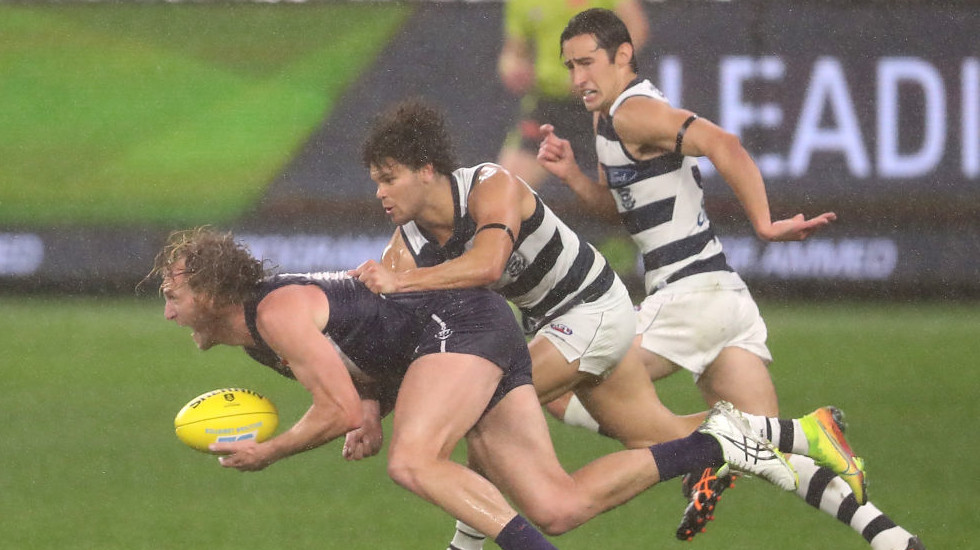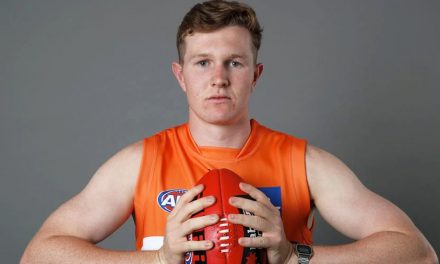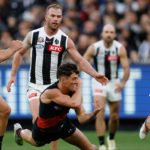Fremantle veteran David Mundy could be tempted to play on with coaching part of his job description. Photo: GETTY IMAGES
Almost 40 years have passed since Malcolm Blight stepped down as North Melbourne’s playing coach, releasing the reins to Barry Cable in one of the most awkwardly-handled handovers in VFL history.
Within minutes of the official announcement, Blight had been sent by Cable to belatedly join his teammates for training, no longer in the position of authority he had held for the opening 16 rounds of the 1981 season.
Blight later described his two warm-up laps in front of the gathered media and interested onlookers as the “worst moment of my football life” as he pondered how it had all come to this.
A 6-10 record that year, including defeats in his last six games at the helm by an average margin of 55 points had ultimately forced his hand.
Blight continued playing under Cable through to the end of the next season, but the uncomfortable passing of the coaching baton at Arden Street signalled the end of a great football tradition, at least at VFL level.
There was a happy ending, of sorts. As a player under Cable, Blight in the two weeks after he handed over coaching duties would kick bags of 11 and eight goals in wins over Footscray and St Kilda. The next year, he’d boot 100 before heading home to South Australia, and the far-from-hapless Roos would play finals.
Both he and Cable now sit comfortably as official Legends in the Australian Football Hall of Fame, having been elevated to the status in 2012 and 2017 respectively. But Blight would be the last playing coach in the competition’s history, Alex Jesaulenko having retired as a player while coaching St Kilda earlier in that 1981 season.
Jezza, Carl Ditterich and Des Tuddenham had all tried their hands at the difficult player-coach balancing act over the preceding 10 years, following in the footsteps of the great Ron Barassi and many others before him.
It would be an impossible task now. So much has changed in football and life over the last few weeks and months, let alone the last few decades.
But the COVID-19 pandemic and associated financial crisis has forced AFL clubs to think outside the box.
Stay with me here.
Drastic cost-cutting enforced by the AFL means the days of bloated football departments are over, with the soft cap of $9.4 million to be cut by about $3 million next year.
There will be fewer assistant and development coaches, fewer scouts and analysts, and fewer fitness staff. There will be a need for flexibility, agility and multi-tasking. People with broad skill sets will be of great value, and the most resourceful clubs will give themselves the best chances of success.
It must be noted that playing lists, too, will be reduced – possibly to as few as 35 players – but with coaching staff numbers slashed, clubs might consider borrowing and tweaking a method from Blight’s book by creating space for a playing coach.
PLEASE HELP US CONTINUE TO THRIVE BY BECOMING AN OFFICIAL FOOTYOLOGY PATRON. JUST CLICK THIS LINK.
Not a playing senior coach, of course, but a playing assistant or development coach to fill the void left by the cuts.
Take someone like David Mundy, for example. The Fremantle veteran is still playing good football and sits comfortably in his club’s best side.
He’s also recently turned 35, and may be leaning towards retiring, rather than chasing that elusive premiership, with the rebuilding Dockers still a fair way off contending.
Could Mundy be tempted to go around for one more year, possibly on a reduced wage, and with reduced expectations on him physically, with an eye towards developing his club’s younger players?
Maybe he’d only play a handful of games when needed, affording the youngsters the exposure they require, and lend an experienced and knowledgeable voice behind the scenes.
It could even be a stepping stone towards a greater coaching role down the track.
“There’s so many unknowns around what the football club will look like next year, what the AFL mandate the changes may be,” Mundy recently told ABC radio when quizzed on his playing future.
“It’s very much a wait and see to see where the list lands, see what the club’s direction is and see how my back end of the season form is.
“As has been well-reported, I’m in constant chats with (general manager of football) Peter Bell and (senior coach) Justin Longmuir. We’re aware of everyone’s desires and situation, we’re also very patiently waiting to see what happens.”
The wait for the AFL to outline final playing list and financial parameters will continue for some weeks, but that doesn’t mean planning for different scenarios hasn’t already begun in clubland.
Luke Hodge and Jordan Lewis filled pseudo-development roles in recent seasons, leaving their glory days at Hawthorn behind to set new premiership-level standards for rebuilding teams at Brisbane and Melbourne respectively.
The Western Bulldogs couldn’t find room for Dale Morris on the playing list this year, but kept the 2016 flag hero around as a development coach. Unfortunately, coronavirus cuts meant he was stood down not long after starting.
Of course, filling one of a reduced number of list spots with a playing assistant or development coach would rob a younger player of opportunity, but his presence could also assist the growth of others.
It’s one of many balancing acts clubs will have to weigh up as they prepare their trimmed-down football departments for 2021 and beyond.












WEll, there was some talk as North injury list continues to grow that Rhyce Shaw might pull on the boots…